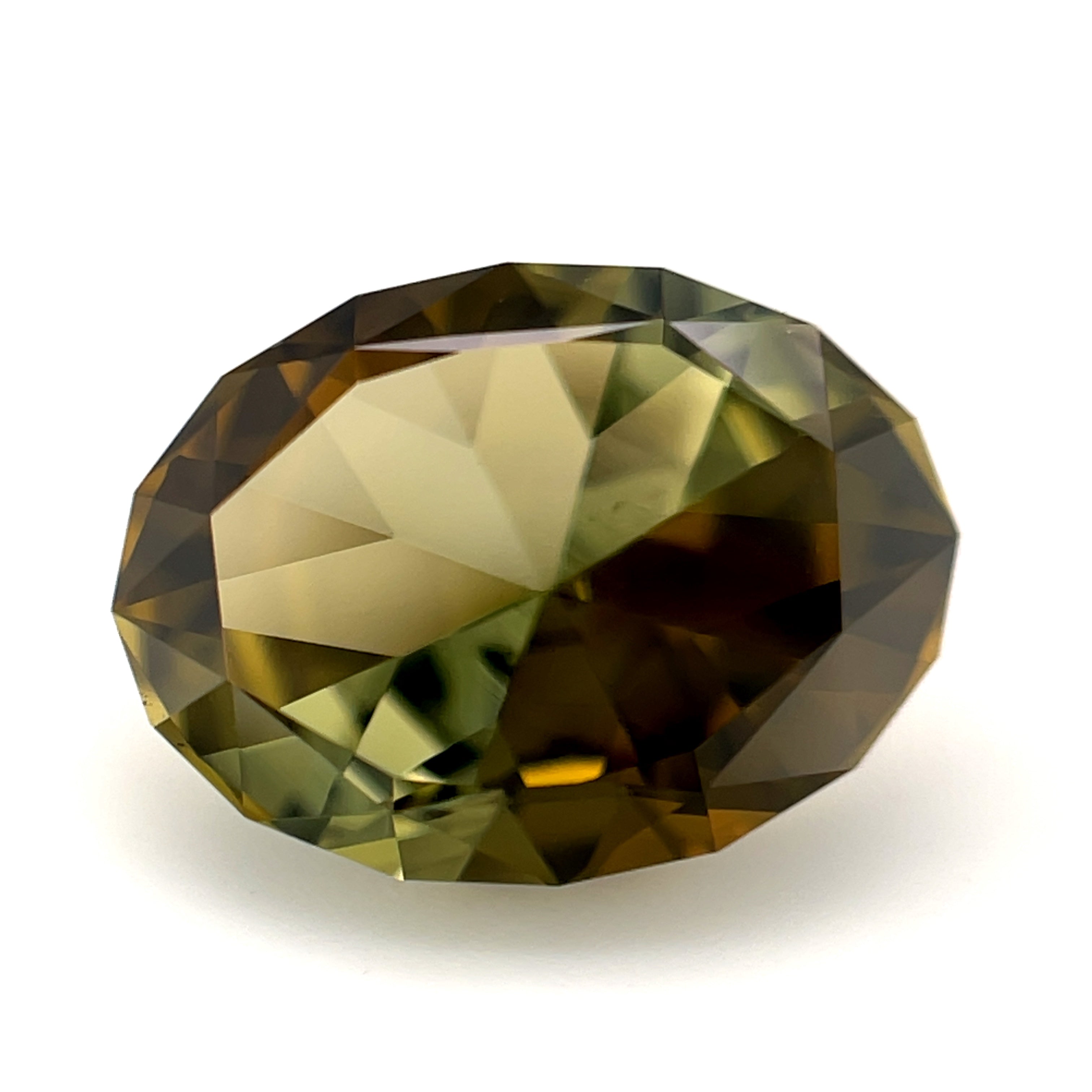


Faceted Tourmaline - 4.26 CTW
Tax excluded. Shipping calculated at checkout
- Variety - Tourmaline
- Clarity - Eye Clean, type 2
- Dimensions - 12.21 x 9.03 x 6.42 mm
- Weight - 4.26 CTW
- Colour - Dark Green, Yellow (WOC 10Y 6/8)
- Cut - Very Good
- Shape - Oval
- Treatment - None
- Origin - Nigeria
- Comments - Inclusions appear to be of natural origin, no visual signs of treatment
- Valuation Certificate from Australia - Yes
More Information about Tourmaline
Tourmaline is an extremely complex borosilicate that occurs in more than 100 colors. It is hard and durable and very well suited for jewelry. It is a pyroelectric mineral, meaning that when warmed, it attracts dust and other lightweight particles. The Dutch later noticed this property and called the crystals "aschentreckers," and used them to pull ashes out of tobacco pipes. It wasn't introduced into Europe until the early 1700's, when it was imported from the Ceylon by the Dutch. Shortly thereafter it was declared a stone of the Muses, inspiring and enriching the creative processes. It was a talisman for artists, actors and writers.
| Name | Tourmaline |
| Varieties | Achroite, Chrome-Tourmaline, Dravite, Elbaite, Cuprian Elbaite, Fluor-buergerite, Indicolite, Liddicoatite, Paraíba Tourmaline, Rossmanite, Rubellite, Schorl, Uvite, Verdelite, Watermelon Tourmaline |
| Refractive Index | Varies by species, 1.603-1.820 |
| Colors | All |
| Hardness | 7-7.5 |
| Wearability | Very Good |
| Enhancements | Heating, irradiation, acid treatment (bleaching), plastic or epoxy fillers. |
| Typical Treatments | Bleaching, Fracture/Cavity Filling, Heat Treatment, Irradiation |
| Etymology | Tourmaline is from the Singhalese word turamali, meaning “mixed-colored stones.” |
Enhancements
Tourmalines can receive many enhancements. These can easily improve a low-quality stone’s appearance and color as well as change its natural color into something more attractive (and valuable).
- Heating: lightens blue and green stones, common, stable, undetectable. Can produce other colors, rare, stable, undetectable.
- Irradiation: produces red, deep pink, yellow, orange colors, and parti-colors, common. May fade on heating or prolonged exposure to bright light, undetectable.
- Acid treatment: bleaches dark inclusions, primarily used on cat’s eyes, occasional, stable, undetectable.
- Plastic or epoxy fillers: seal hollow tubes to prevent dirt from entering, occasional, stable. Detectable with hot point test and magnification.
- Dyes and coatings: usually not stable.
Sources
Today, it is mined extensively in South America, East Africa, and in San Diego County, California.
Care
Tourmaline rough can challenge even experienced gem cutters. Multi-colored gems are often weak where the colors meet, but all color varieties may have stressed areas. Nevertheless, once cut and set in jewelry, tourmalines are very durable stones.
Tourmaline’s Mohs hardness of 7 to 7.5 means these gems can resist scratches from most everyday hazards, including household dust. That’s very fortunate, because due to tourmaline’s electrical conductivity, these gems will attract more dust than non-conductive stones. So, you may have to clean them frequently
Since most tourmalines have numerous inclusions, avoid cleaning them with ultrasonic or steam devices. Vibrations and heat may cause liquid inclusions to expand, shattering the stone. Instead, use a soft brush, mild detergent, and warm water.
Choose options



Tax excluded. Shipping calculated at checkout

